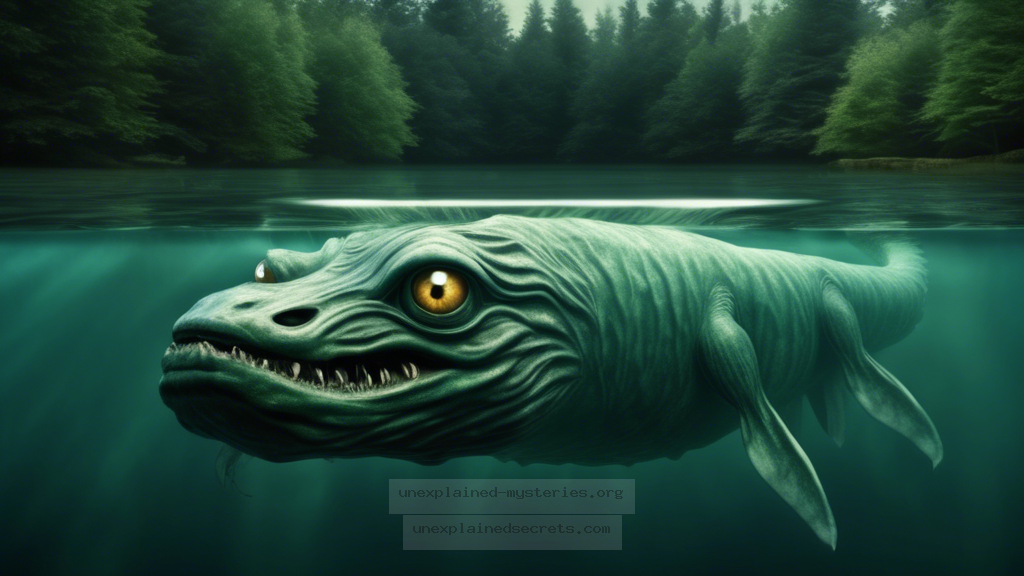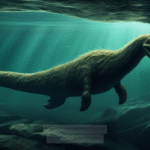What Lies Beneath: Are Lake Monsters More than Just Folklore?
What Lies Beneath: Are Lake Monsters More than Just Folklore?
The enigma of lake monsters has captivated human imagination for centuries. From Scotland’s legendary Loch Ness Monster to the elusive Ogopogo in Canada, tales of these aquatic beasts are steeped in mystery and cultural significance. But are these creatures merely products of folklore and imagination, or do they have grounding in reality? This blog post will dive deep into the world of lake monsters, exploring historical accounts, scientific theories, and ongoing research to unravel the truth behind these enigmatic beings.
Historical Context of Lake Monster Sightings
The phenomenon of lake monsters is not a modern curiosity; it dates back thousands of years. Ancient cultures have documented sightings of mysterious creatures in lakes worldwide, often attributing them to gods or supernatural forces. For example, the Loch Ness Monster, or “Nessie,” has its origins in Scottish folklore, with mentions dating back to the 6th century when St. Columba reputedly encountered a “water beast” in the river Ness.
Similarly, the Ogopogo of Okanagan Lake in British Columbia, Canada, has been a part of Indigenous legends for centuries, described as a spirit of the lake. These historical accounts provide a rich tapestry of human interaction with the unknown, suggesting that our fascination with lake monsters is deeply rooted in cultural narratives. 💡
Core Concepts: What Are Lake Monsters?
Lake monsters are typically described as large, aquatic creatures that inhabit freshwater lakes. They are often depicted as serpentine or elongated, with various features that may resemble those of known animals, such as the body of a seal or the head of a dinosaur. Cryptozoology, the study of hidden or unknown animals, often investigates these reports, seeking to understand whether these creatures could exist based on anecdotal evidence.
Two primary theories exist regarding the identity of lake monsters: they may be undiscovered species or misidentified known animals. For instance, some researchers speculate that “Nessie” could be a surviving plesiosaur, a marine reptile from the age of dinosaurs. Others argue that it might be a large sturgeon or a misidentified otter, highlighting the complexities of the lake monster phenomenon. ⚠️
Documented Cases of Lake Monster Sightings
Throughout the years, numerous documented cases have emerged, capturing public interest and scientific inquiry. One notable account occurred in 1934 when a photograph known as the “Surgeon’s Photo” purportedly showed the Loch Ness Monster’s head and neck. This image sparked a frenzy of interest and led to extensive investigations, only to be later revealed as a hoax. However, the incident underscores the powerful role of visual evidence in shaping public perception.
Another compelling case involves sightings of the Champ, a lake monster in Lake Champlain, which has reportedly been seen by locals and tourists alike since the early 19th century. Eyewitness accounts describe a creature resembling a large serpent, capable of breaking the surface of the water. In 2003, a sonar scan revealed an unidentified object in the lake, reigniting interest in Champ’s existence. ✅
Scientific Investigations: What Do Experts Say?
Scientific investigations into lake monsters often focus on environmental factors, ecology, and wildlife behavior. Researchers employing sonar technology and underwater cameras have attempted to locate evidence of these creatures. In one of the most significant studies, a team from the University of Otago in New Zealand conducted research in Lake Te Anau, known for its own lake monster legend. Their findings yielded no evidence of unknown species but did offer insights into the lake’s biodiversity.
Dr. Neil Gemmell, a geneticist involved in the Loch Ness investigation in 2018, collected water samples to analyze for DNA. The results revealed no traces of large animals, leading to speculation that the legends might be rooted in exaggeration or misidentification. However, the sheer volume of anecdotal evidence cannot be dismissed entirely, raising questions about the limitations of current scientific methods in uncovering hidden creatures. 💡
Alternative Perspectives: The Cultural Significance of Lake Monsters
While the scientific community often approaches lake monsters with skepticism, the cultural significance of these legends cannot be overlooked. Many communities embrace their local lake monster as a symbol of identity and pride, contributing to tourism and folklore. For instance, the popularity of the Loch Ness Monster has transformed the surrounding area into a thriving tourist destination, fueling local economies.
Additionally, lake monsters often serve as metaphors for human fears and uncertainties. They embody the unknown, prompting reflection on humanity’s relationship with nature and the limits of knowledge. This perspective shifts the focus from purely scientific inquiry to a broader understanding of how these legends affect societal beliefs and behaviors. ⚠️
Common Misconceptions and Clarifications
One common misconception is that all lake monsters are hoaxes or misinterpretations. While many sightings may lack credibility, some credible eyewitness accounts and unexplained phenomena continue to fuel the mystery. Furthermore, the belief that these creatures are always malevolent is a fallacy; many cultures view them as protectors of their respective lakes.
It’s also important to clarify that not all lake monsters are derived from ancient myths. Some reports stem from modern sightings, indicating that the intrigue surrounding these creatures persists. The ongoing interest in lake monsters highlights humanity’s enduring fascination with the unknown. ✅
Best Practices for Investigating Lake Monsters
For those interested in investigating lake monsters, a methodical approach is essential. Here are some recommended best practices:
- Document sightings: Keep a detailed log of any encounters, including time, date, location, and weather conditions.
- Use technology: Employ tools like drones, sonar, and underwater cameras to gather evidence.
- Engage local communities: Speak with locals who may have valuable insights or reports of sightings.
- Collaborate with researchers: Partner with experts in fields such as biology, ecology, and cryptozoology for a comprehensive investigation.
Future Developments: Ongoing Research and Technological Advances
The future of lake monster research is increasingly intertwined with advancements in technology. Innovations in genetic analysis, remote sensing, and environmental DNA (eDNA) sampling may provide new insights into these elusive creatures. Remote-operated vehicles (ROVs) equipped with high-definition cameras could allow for more extensive exploration of deep lakes, previously inaccessible to researchers.
Moreover, the growing popularity of citizen science initiatives encourages amateur investigators to contribute to the search for lake monsters. Engaging the public in data collection and analysis can expand the reach of research efforts and cultivate a broader appreciation for the mysteries of our natural world. 💡
Conclusion: The Mystery Continues
The question of whether lake monsters are more than just folklore remains open-ended. While scientific investigations have yet to provide conclusive evidence of their existence, the cultural significance and enduring fascination surrounding these creatures highlight the complexity of the human experience with the unknown. As technology advances and our understanding of biodiversity deepens, the mystery of lake monsters continues to intrigue both skeptics and believers alike.
Ultimately, lake monsters serve as a reminder of the vast mysteries that still lie beneath the surface of our world, waiting to be discovered. Whether they exist or not, they challenge us to explore, question, and embrace the extraordinary possibilities of the unknown. 🌊
Other Articles
Recent Posts
- What Happened to Flight MH370? The Conspiracy Theories That Still Haunt Us
- What Secrets Lurk Within the Walls of the Infamous Trans-Allegheny Lunatic Asylum?
- What Evidence Supports the Existence of Bigfoot in the Pacific Northwest?
- What Happened to the Indus Valley Civilization? Unraveling the Mysteries of Ancient Urban Life
- Can Telepathy Be Scientifically Proven Through Laboratory Evidence?







